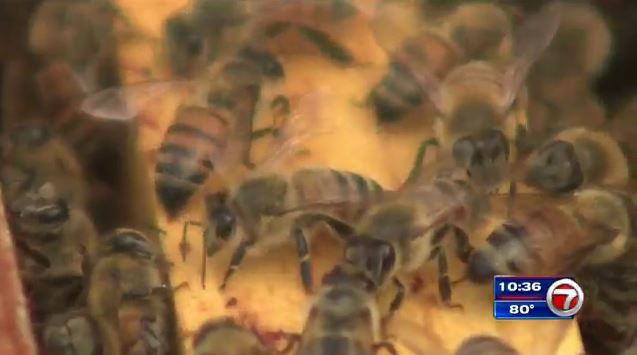(CNN) — She was digging in the trunk of her car for a mop when they attacked.
The woman was part of a four-person cleaning crew at a home in Lake Forest, California, on Monday when a swarm of Africanized bees descended upon her. Within seconds they were crawling on her face, ears, neck and arms, stinging her everywhere.
She suffered from more than 200 stings, and was transported to a nearby hospital in critical condition, said Orange County Fire Authority Fire Captain Anthony Bommarito, who would identify the woman only by her first name, Maria.
Chaos at the scene
The four firefighters dispatched to the scene were prepared to find a few stings. But they arrived to find bees still attacking the woman, who was lying on the ground and screaming.
There wasn’t enough time to put on proper protective wear, so they used a carbon dioxide fire extinguisher in an effort to drive away the bees.
A few were knocked down, but it was only somewhat effective, Bommarito said.
Eventually, the firefighters had to half-carry Maria two blocks away to free her from the bees.
“She was conscious, but unaware,” Bommarito said. “She was stoic — not so much in physical shock, but emotional shock.”
The woman’s son said Maria is recovering and is expected to survive, the Fire Authority told CNN.
All four of the OCFA firefighters were stung, and two were transported to a hospital in stable condition but chose to return to work the same day.
Bee experts were called to the scene after the ambulance left with Maria. They found a large beehive, with 10 gallons of honeycomb, in a nearby utility box half buried underground.
The experts estimated the hive could hold 30,000 to 80,000 bees, but they weren’t sure how many of them attacked Maria. Many bees tend to stay back and protect the hive, Bommarito said.
He told CNN that his firefighters rarely respond to incidents of bee attacks, and when they do, it’s usually one or two stings.
What are Africanized bees?
Africanized bees are a hybrid of African and European honeybees. They were brought to Brazil in 1956 to increase honey production.
In 1957, 26 African queens escaped an enclosure, along with hordes of European worker bees, and the two species crossbred.
The hybrid bees, known as “killer bees,” gradually spread northward through South America, eventually coming to the US. They are found in parts of Texas, California and Arizona, and their populations are expected to increase in parts of the South, according to the Smithsonian.
Africanized bees are known to be much more aggressive than domestic honey bees. They attack in larger numbers, react to disturbances 10 times faster, and will chase victims for a quarter mile.
About 1,000 people worldwide have died from Africanized honey bee attacks since their introduction to Brazil, the Smithsonian said.
The-CNN-Wire™ & © 2024 Cable News Network, Inc., a Time Warner Company. All rights reserved.

